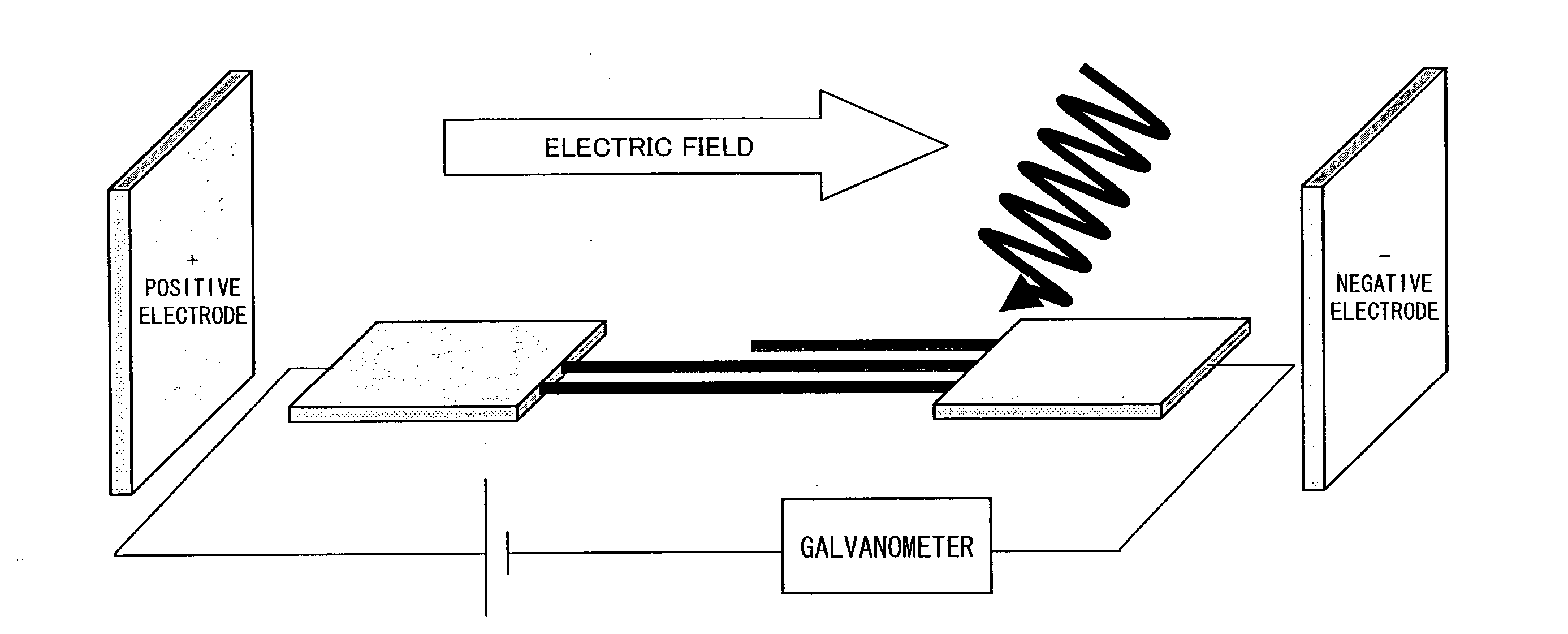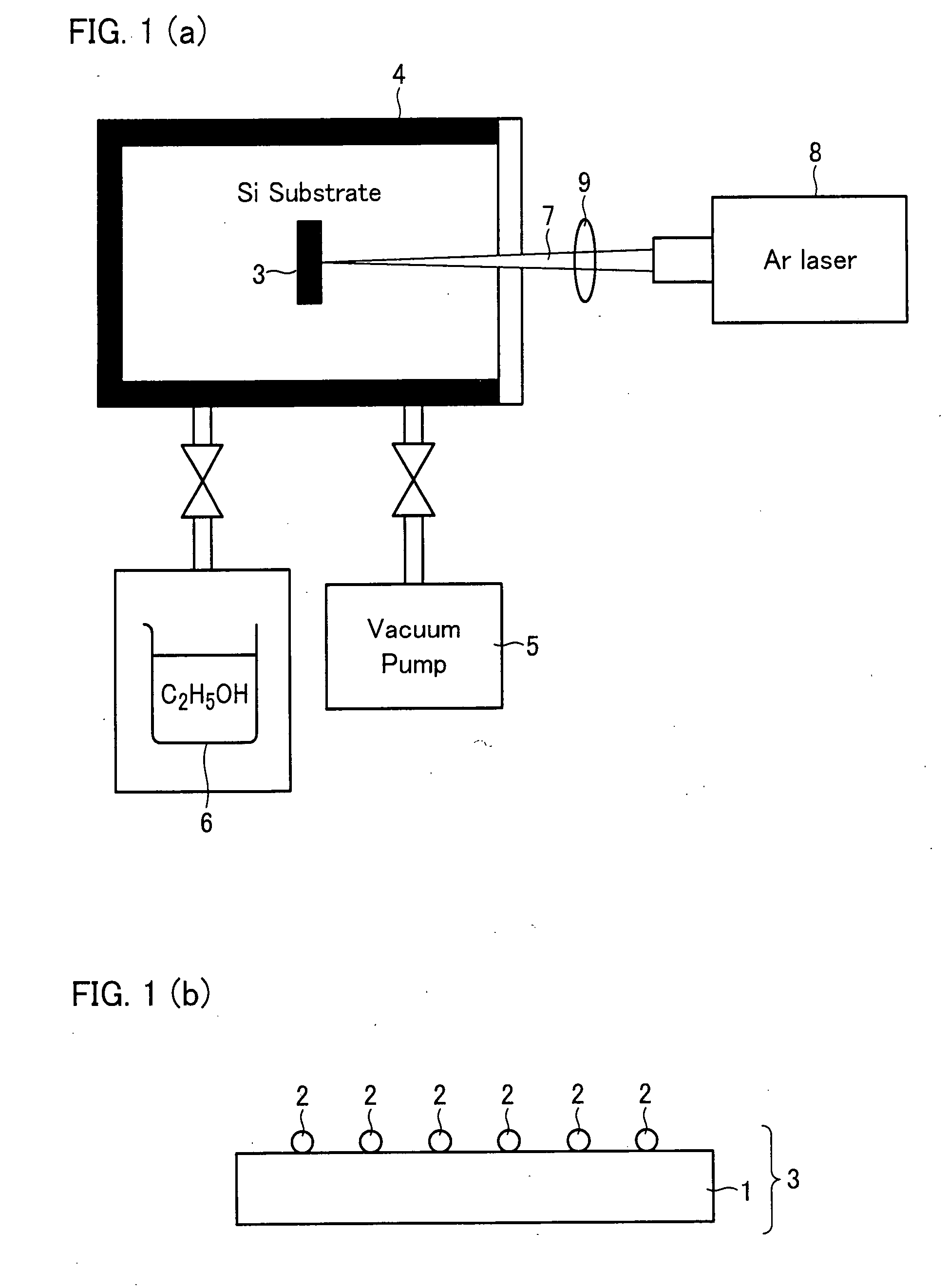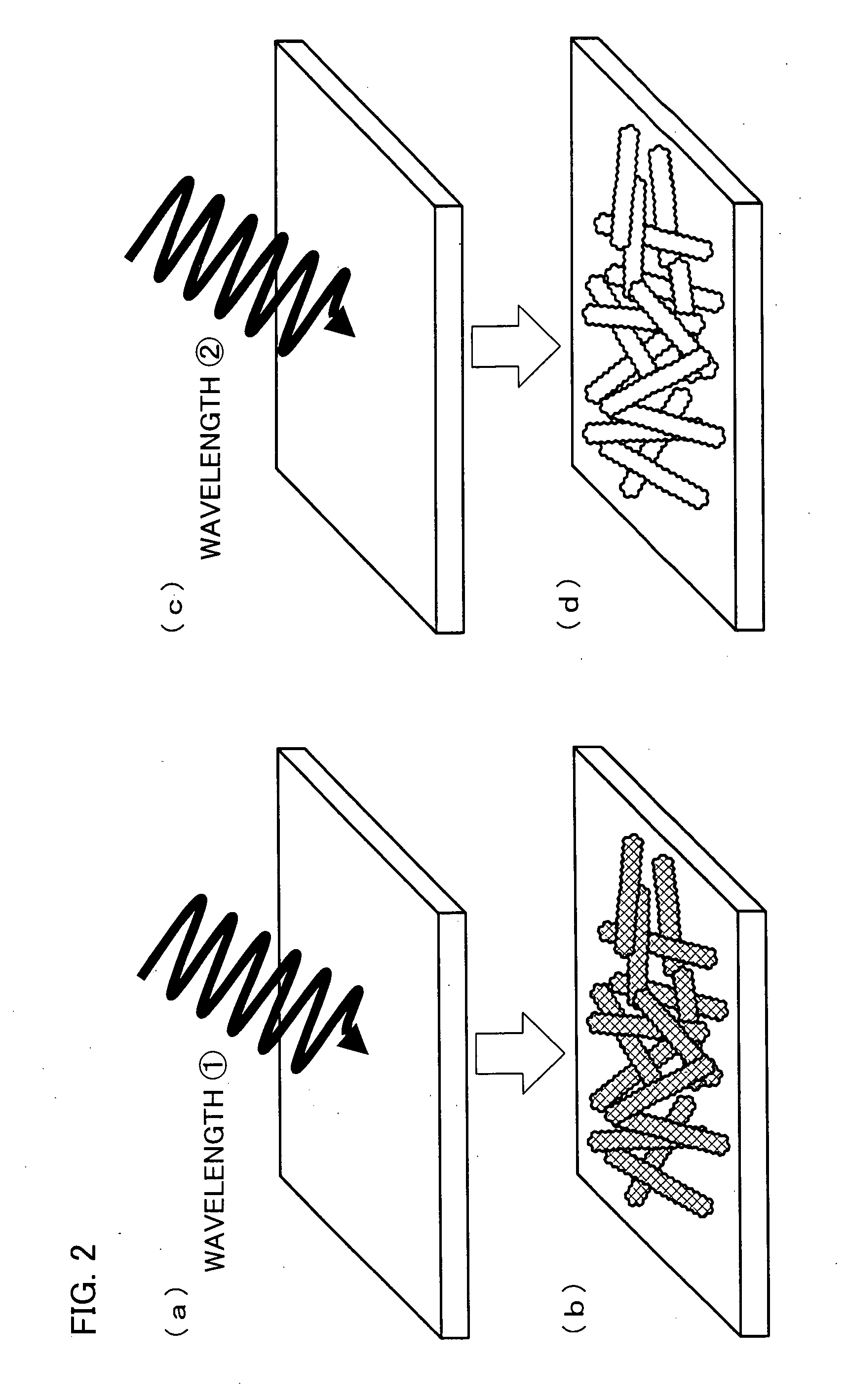Method for Producing Nano-Scale Low-Dimensional Quantum Structure, and Method for Producing Integrated Circuit Using the Method for Producing the Structure
a low-dimensional quantum structure and integrated circuit technology, applied in the field of producing a nano-scale low-dimensional quantum structure and a method for producing an integrated circuit using the method for producing the structure, can solve the problems of not being able to precisely form the carbon nanotubes in the desired position, not being able to obtain a certain amount of carbon nanotubes, etc., and achieves the effect of high availability and effective us
- Summary
- Abstract
- Description
- Claims
- Application Information
AI Technical Summary
Benefits of technology
Problems solved by technology
Method used
Image
Examples
embodiment
[0045] With reference to FIGS. 1 to 6, the following describes one embodiment of the present invention. Note that, the present invention is not limited to the embodiment.
[0046] Note that, in the present embodiment, single-walled carbon nanotubes are produced as a nano-scale low dimensional quantum structure. However, a product which can be produced in accordance with the present invention is not limited to the single-walled carbon nanotubes. Examples of the product include multi-walled carbon nanotubes, carbon nanohorn, boron nitride, carbon nanofiber, carbon nanocoil, fullerene, and the like.
[0047] The production method of the single-walled carbon nanotubes is as follows. First, as illustrated in FIG. 1(b), a catalyst 2 for forming single-walled carbon nanotubes are applied to a substrate 1.
[0048] Any material may be used for the substrate 1 as long as the material can resist high temperature caused by emission of an electromagnetic wave. Examples of the material include silicon...
example
[0079] Example of the present invention is detailed as follows with reference to Experiments 1 to 6. However, the present invention is not limited to the Example. Note that, all the experiments were carried out at room temperature.
experiment 1
[Experiment 1] Formation of Substrate
[0080] A catalyst containing iron (Fe), molybdenum (Mo), and aluminum oxide (Al2O3) was applied to an Si substrate. Here, a catalyst of iron (Fe), a catalyst of molybdenum (Mo), and a catalyst of aluminum oxide (Al2O3) were mixed with one another by using methanol, and the mixture was dropped onto the substrate, thereby applying the mixed catalysts to the substrate.
[0081] Note that, in the present example, the catalysts were mixed as follows by using the following chemicals.
Chemical A: Iron (III) nitrate nonahydrate 98% (iron-containing solid)
Fe(No3)3.9H2O (product of Aldrich Company)
Chemical B: Bis(acetylacetonato)-dioxomolybdenum (IV)
(molybdenum-containing solid)
(C5H8O2)2MoO2 (product of Aldrich Company)
Chemical C: Aluminum oxide (aluminum oxide solid)
“Fumed Alumina” Al2O3 (product of Degussa Company)
[0082] First, 40 mg of the chemical A, 3 mg of the chemical B, and 30 mg of the chemical C were placed in a beaker, and 30 ml of me...
PUM
 Login to View More
Login to View More Abstract
Description
Claims
Application Information
 Login to View More
Login to View More - R&D
- Intellectual Property
- Life Sciences
- Materials
- Tech Scout
- Unparalleled Data Quality
- Higher Quality Content
- 60% Fewer Hallucinations
Browse by: Latest US Patents, China's latest patents, Technical Efficacy Thesaurus, Application Domain, Technology Topic, Popular Technical Reports.
© 2025 PatSnap. All rights reserved.Legal|Privacy policy|Modern Slavery Act Transparency Statement|Sitemap|About US| Contact US: help@patsnap.com



